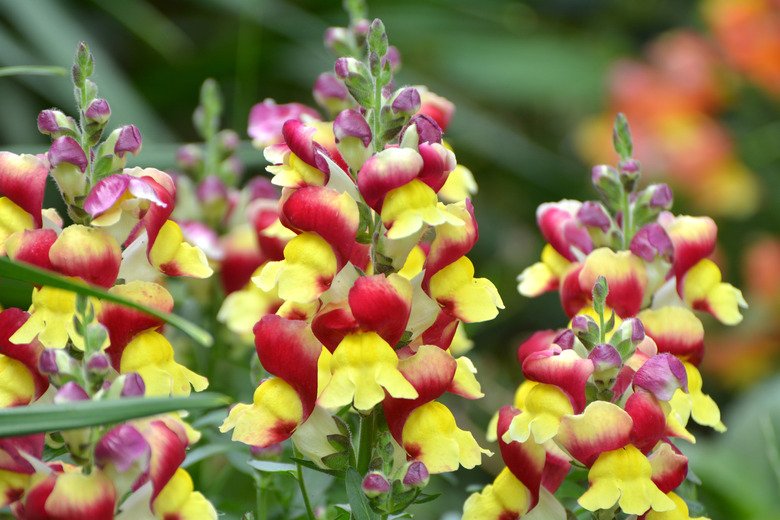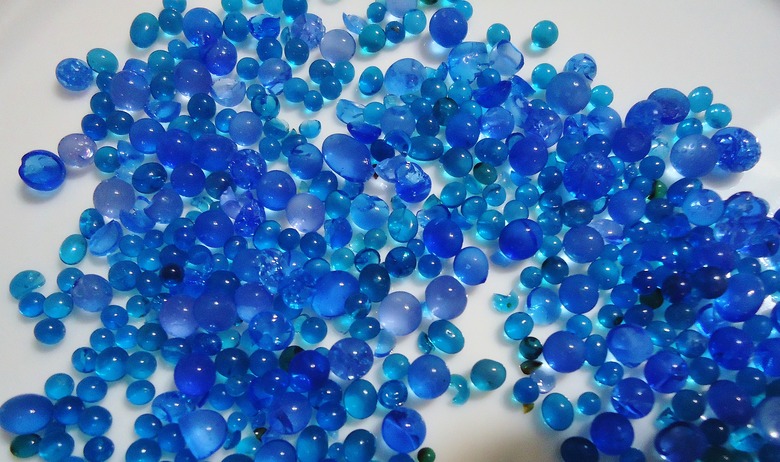How To Preserve Snapdragons
Preserving flowers allows you to enjoy them long after their blooms would have naturally faded. They also make unique handmade gifts from your garden for family and friends.
Preservation techniques for flowers and foliage include pressing them, hanging them to dry and using a drying agent called a desiccant. Not all methods work well for all flowers. To dry snapdragon flowers, using a desiccant is the best option.
Snapdragon flower drying time varies depending on the type of desiccant you use, and it can take from two to three days to two to three weeks to dry snapdragons.
Using the Desiccant Method to Dry Snapdragons
Garden snapdragons (Antirrhinum spp., USDA plant hardiness zones 7 to 10) have distinctive flowers, which prompted taxonomists to give them the genus name Antirrhinum that translates from the Greek "anti" (like) and "rhis" (a nose or snout).
Why the Pressing Method Isn't Ideal for Snapdragons
These two-lipped "dragon's snout" flowers are the reason that snapdragons aren't good candidates for pressing them as a drying method. When pressed flat, snapdragons lose their characteristic appearance. The blooms also lose their shape when hanging them to air dry.
Why Desiccants Work Best for Drying Snapdragons
By placing individual snapdragon flowers or stems with multiple blooms into a container with a desiccant, they're able to retain their structural integrity as they dry. Using this method, dried snapdragon flowers are papery versions of their former living state.
Colors of dried snapdragons may change a bit, however, from their hues when blooming on the plants. Adding 3 tablespoons of noniodized salt to each quart of desiccant may help your flowers retain their color.
Snapdragon Flower Drying Agents
There are numerous desiccants that can be used to dry flowers, including sawdust and kitty litter, but there are three commonly used drying agents that are best for drying snapdragons:
1. **Borax and sand:** Choose fine-grade sand and mix it with borax. The borax-sand ratio is variable depending on what works best. It can be equal parts of each (1:1) or up to 6 parts sand (1:6). One drawback of choosing the borax-sand mixture is that sand is heavy and can flatten the "dragon's snout" of your snapdragons, especially if you use a higher percentage of sand vs. borax. Experiment with different ratios to find what works best for you. 2. **Borax and cornmeal:** Much lighter than sand and less likely to flatten snapdragon flowers, cornmeal mixed at a 1:1 ratio with borax works as another drying agent. 3. **Silica gel:** The hands-down preferred desiccant to dry snapdragons is silica gel, which isn't really in gel form but in crystalline form. Some products contain crystals that are blue when dry, and they turn pink as they absorb moisture from the flowers. You can reuse these crystals, drying the moisture-retentive pink ones in the oven until they're blue (and dry) again.
How to Dry Snapdragons Using a Desiccant
Choose a container for drying snapdragons depending on the type of drying agent you use. For desiccants containing borax, you'll need an uncovered container, such as a cardboard box, for good air circulation. If you're using silica gel, use a container with a tightly fitting lid to form an airtight seal. Use a shallow container regardless of the type of drying agent you're using.
- Place a layer of desiccant in the bottom of the container to
a depth of 2 inches.
- Arrange individual snapdragon flowers or stems with multiple
flowers on top of the medium.
- Gently sprinkle desiccant around and on top of the flowers a
little at a time, being careful not to pour too much at a time and crush the flowers.
- Continue covering the flowers until they're completely
buried.
- Gently raise the container and lightly tap it on the bottom
to firm the drying agent around the flowers and remove any air pockets. After tapping, add more desiccant if you can see any flowers.
- If using a borax-based desiccant, leave the container open
and store it in a dry place. If using silica gel, tightly cover the container.
Silica gel desiccants dry snapdragons quicker (typically three to eight days) than borax-based agents, which can take two to three weeks.
You may have to experiment to discover the sweet spot for how long you leave snapdragons in your preferred desiccant. Not enough time results in petals that droop and do not hold their dried shape, while too much time results in flowers that are so brittle that they shatter easily.

